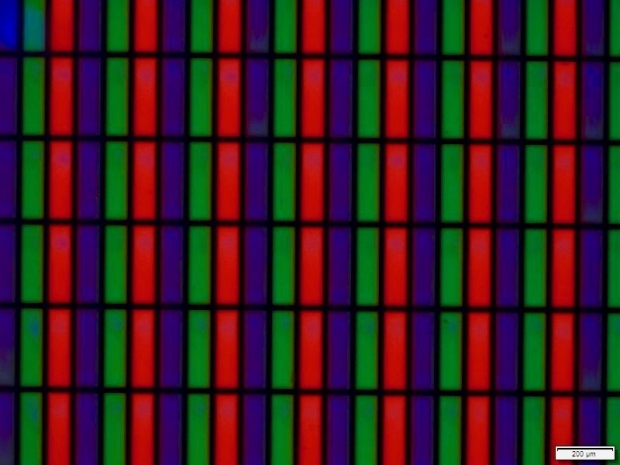Inkjet printing of Quantum Dot colour conversion layers could breathe life into the LCD technology, and accelerate the development of emerging emissive display technologies such as microLEDs.
A microscope image of ink jet printed red and green Cadmium-free Quantum Dot is the colour conversion layer. Printed Quantum Dots can improve LCD efficiency by as much as 300 percent and could solve key manufacturing challenges for next generation microLED displays.
This device will be demonstrated by Nanosys and DIC Global at the IDW Conference in Sendai, Japan.
The benefits of Quantum Dot colour conversion layers include a power efficiency or brightness improvement of as much as 300 percent , perfect 180 degree viewing angles and lifelike colour accuracy with much wider colour gamut.
Kiyotaka Kawashima, Executive Officer and General Manager Corporate R&D Division, DIC Corporation said: "Nanosys is focused on providing best-in-class Quantum Dot materials and technology to help printed Quantum Dot displays achieve mass commercialization. We expect that our collaboration with Nanosys will enable display makers to successfully manufacture printed Quantum Dot displays, at scale, sooner."
Delivering a true mass production ready ink jet printing solution for large area UltraHD Quantum Dot displays required technical breakthroughs in several key areas.
Nanosys Cadmium-free quantum dots have been designed to be compatible with DIC's materials and processes used for inkjet printing. Inks have been created for jettability across a wide range of print heads and tuned for both UV and thermal curing, giving display makers flexibility to deploy the materials in different manufacturing lines.
Nanosys Vice President of Sales and Marketing Russell Kempt, said with DIC and Nanosys combining their considerable expertise in inkjet printing and Quantum Dot materials, the industry is poised to take a significant step forward in achieving low cost mass production of Quantum Dot displays.




